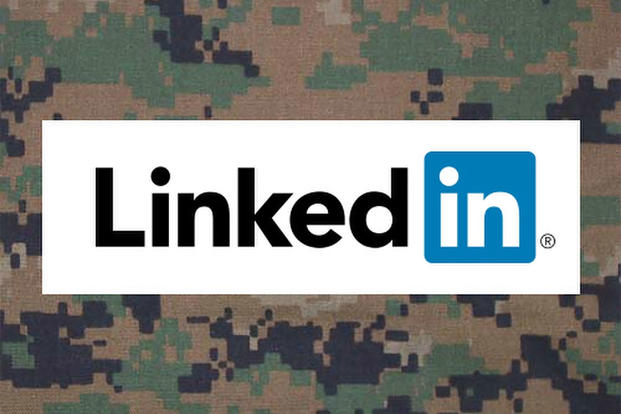You've likely seen all the articles, blogs and podcasts touting the importance and value of LinkedIn. Since its inception, LinkedIn has grown to be a valuable career asset for global professionals, business leaders, entrepreneurs, students and veterans.
Getting started on LinkedIn can feel overwhelming and intimidating. If you've never been active on social media or have kept your social networking limited to socializing with friends and family, the idea of putting your post-military life online can be scary.
To get started, consider these five steps to establish your presence, build connections, promote your value and use the platform in the way in which it was designed:
1. Create Your Profile.
Your profile name should be your full name as you're typically called. Avoid choosing a silly nickname that only your battle buddies would know, or otherwise staying covert. The point of being on LinkedIn is to be found, so hiding defeats the purpose.
Your profile can serve as a mini website about you and your experiences, career highlights, volunteer work, connections, recommendations and can point to what you want to do next. Or your LinkedIn profile can be more of a white pages-type listing of your name, rank and email address. I suggest the former.
2. Post a Photo.
It sounds simple, but many people struggle with what image of themselves to share. Your profile picture should be of you (alone) and should be recent. Avoid using wedding or family photos, pictures with lots of other people or photos taken years ago. It should look like you today.
And if you are clear about the type of work you want to do next, your profile photo should look like you in that job. For instance, if you're going to be working in financial services, you'll show yourself wearing a suit. If your job after the military is as a supply chain manager in a warehouse environment, you could wear a polo shirt (as that's what someone in that job in the civilian sector could wear).
3. Build Out Your About, Experience, Education and Accomplishments Sections.
LinkedIn gives you several places to add content to your profile. Don't let this overwhelm you.
Describe yourself and your goals, and explain (in narrative form) your experience to date in the About section. This is a great place to tell people who you are beyond what you've done. Use keywords whenever possible, to get the attention of recruiters and employers who may be searching for someone like you.
Under each job (experience) you list, translate the military code (military occupational specialty) to a civilian equivalent. Online translator tools can help with this. Also, identify which branch of service you served in (as your "employer") so the search feature of LinkedIn can support you. Be sure to list out as many successes, results and accomplishments for each position as you can muster. It will feel like you're bragging, but you're not.
List out your education, including certificates and degrees you're currently pursuing or completing. Include awards or decorations you've received in the Accomplishments section.
4. Make Connections.
Search for the names of people you know from your time in the military, whom you've met at events, job fairs, job interviews and people you know from your community. Personalize the invitation to connect, so the recipient is reminded how they know you or where you've met. Once you've connected with them online, start a conversation -- ask them about their work or their career and find common areas of interest to build from. LinkedIn is about mutual collaboration and information sharing. It all starts with connections.
5. Leave the Military Behind.
I say this with caution: Do not eliminate all things military from your profile but adapt them to the environment you're moving toward. Your online audiences want to see that you've made the transition to the civilian sector.
Wherever possible, show employers, networking contacts and online connections that your career in the military explains how and why you're passionate about your next step. Help online viewers relate to, and find value in, your past career and show them you're ready for the next chapter.
This list is a place to start. Your LinkedIn profile will grow and evolve as your career does. Getting started is often the hardest place. Follow these steps and set yourself up for success.
Stay on Top of Your Veteran Benefits
Military benefits are always changing. Keep up with everything from pay to health care by signing up for a free Military.com membership, which will send all the latest benefits straight to your inbox while giving you access to up-to-date pay charts and more.
















